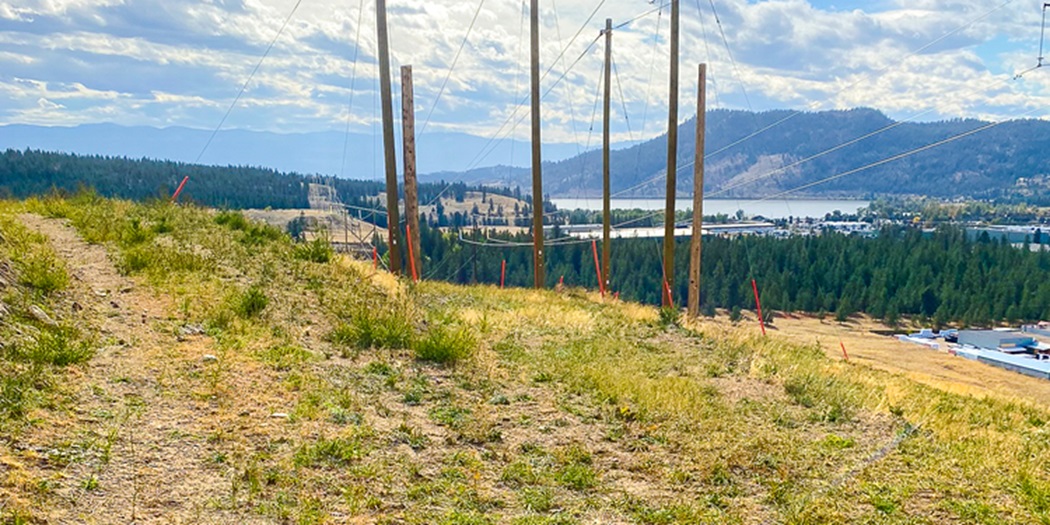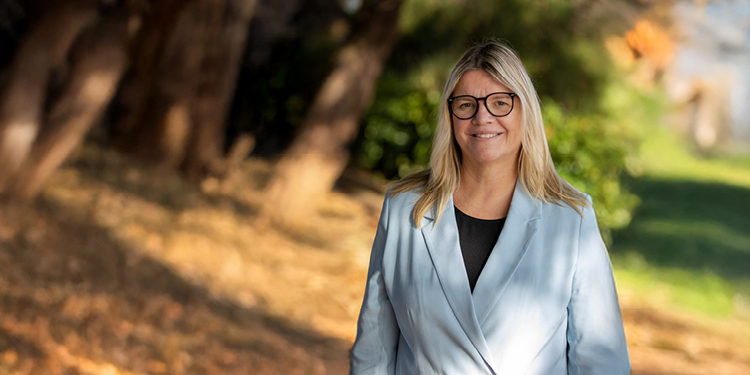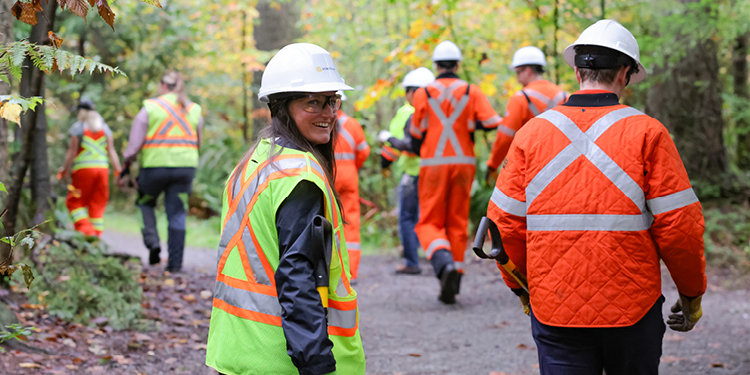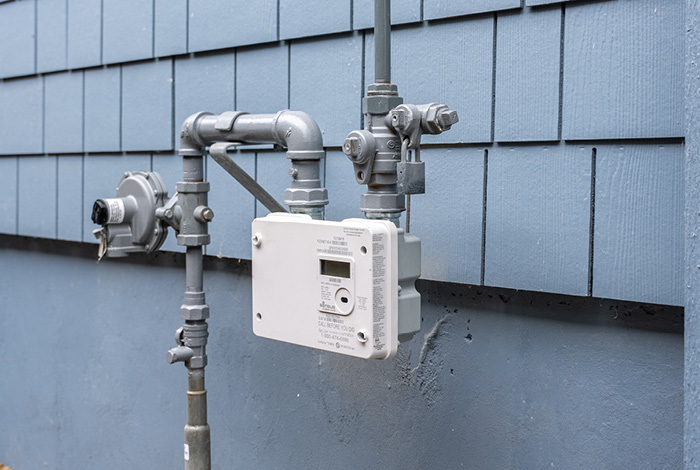Four seed mixes improving biodiversity on rights of way
January 14, 2025
What looks like a cleared area below power lines and gas line corridors is actually a complex and unique opportunity to improve biodiversity, protect against wildfires, resist drought and help support pollinators and other important wildlife. Pollinators, including bees, butterflies and hummingbirds play an important role in B.C.’s environment, and seeding the natural spaces around our operations can help pollinator populations grow.
Let’s take a look at the work we are doing to maintain the natural spaces around our operations.
Planting on rights of way
What are rights of way (ROW) anyway? FortisBC has certain rights from landowners to install, replace, maintain and access works related to our gas and electricity transmission systems.
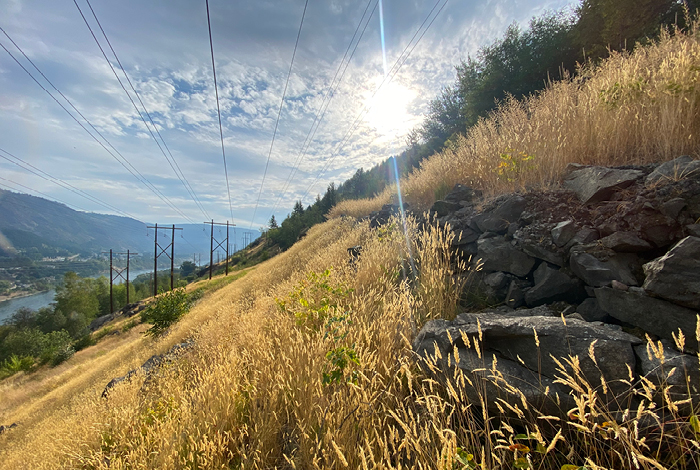
Native plantings can enhance the biodiversity of rights of way.
Our crews work along ROW to update and maintain the gas and electricity transmission systems. This work can sometimes cause soil disturbance, remove vegetation from the site and impact habitat for wildlife in the area. Looking for ways to mitigate this, the team saw an opportunity to enhance the biodiversity of the land where our crews work by improving the types of seed mixes we use for seeding on our ROW.
Creating habitats for pollinators
Seeding the green spaces on ROW for pollinators provides benefits to important wildlife. Pollinators, including bees, butterflies and hummingbirds are a diverse group of organisms that visit flowers to feed on pollen and nectar. In the process, pollinators transfer pollen grains and assist plants in reproduction, supporting productivity in natural landscapes.
A decline in pollinator populations can have a large impact given the critical roles that these species play in ecosystems. Many pollinator populations are declining due to factors such as habitat loss and disease, so it’s important that we find ways to help these populations grow.
“There is huge potential for pollinator habitats along ROW, and it’s important that we look at ways we can restore and enhance these spaces for pollinator populations to grow”, said Amy Duncan, biologist with FortisBC. “The habitat requirements of pollinators are quite simple, they need natural foraging areas with flowers that bloom throughout the season, and nesting areas.”
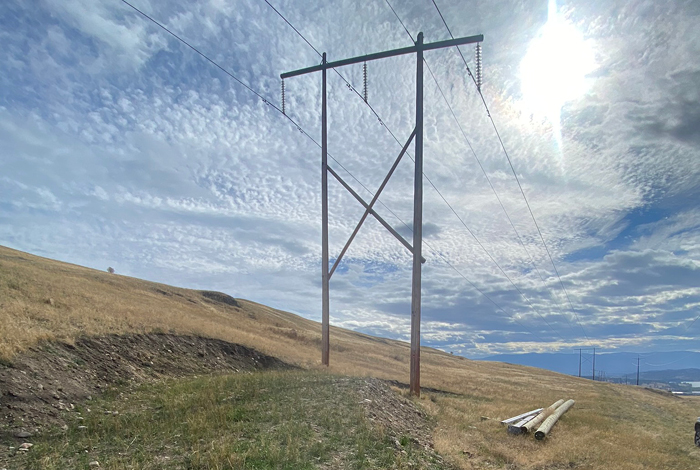
Seeding native flowering species and providing nesting materials offers huge benefits to pollinators.
Choosing the right seed mix for the right region
When planting on ROW, or even in your own garden, choosing the right plant for the region is imperative to ensure they thrive. Using seeds of plants native to the region can help support the needs of local wildlife, provide balance to the ecosystem and they are better adapted to the local environment, meaning they require less care and maintenance. They also have longer roots, which allow more water absorption, drought tolerance and wildfire resistance. Our native seed mixes are also designed to quickly establish on bare ground, preventing the spread of invasive species.
When it came to updating the seed mixes for our vast service territories across the province, the team broke it down into four different regional mixes, including:
- Coastal Mix
- Interior Mix
- Northern Mix
- Bunchgrass Mix
The Coastal Mix is made up of species that grow well in moist conditions, including the Spike Bentgrass, Native Red Fescue and Meadow Barley. The Interior Mix includes plants that grow well in drier conditions, such as the Okanagan, and can quickly cover bare ground, including the Nodding Brome, Slender Wheatgrass and Sandberg’s Bluegrass. For the colder regions of the province, the Northern Mix includes plants that can handle the harsh cold climate, including the Mountain Brome, Alpine Bluegrass and Rocky Mountain Fescue. The Bunchgrass Mix is suited to the dry, grassy regions of the province, and includes Junegrass and Bluebunch Wheatgrass, as native bunchgrasses can help slow the spread of wildfires compared with invasive weeds.
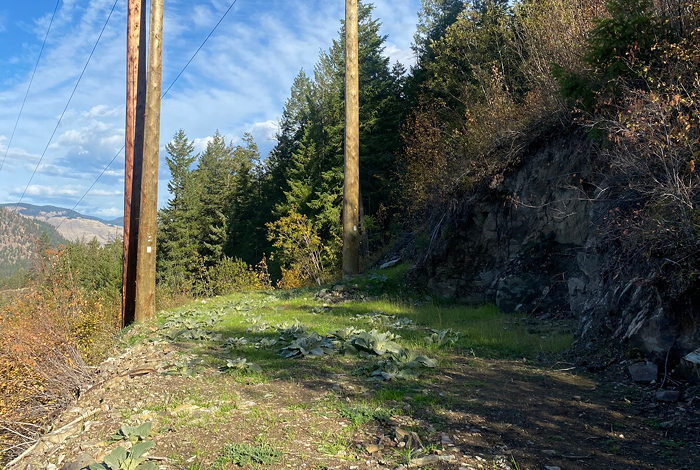
With seed mixes complete, the next step is to start sowing the seeds.
Working together
With a collective effort from the Innovation and Sustainability Ambassador Network, which seeks to develop projects and initiatives focused on improving sustainability practices within our organization, and our environment team, the regional seed mixes are now complete, and the next step is to start sowing the seeds. The new seed mixes are now available to be ordered directly from distributors so crews can hand-broadcast seeds onto the disturbed soil once their work is complete.
The new seed mixes are now available for our operations crews in the field. There is a lot of behind the scenes work that goes into projects like this one, but the work doesn’t stop there. We rely heavily on the collaboration with our operation crews to help bring these green spaces to life.
Amy Duncan, biologist at FortisBC
If you’re looking to improve planting on your own green space or garden, be sure to check out which native plants are best for your region. Once your seeds are selected, it’s time to get sowing!
